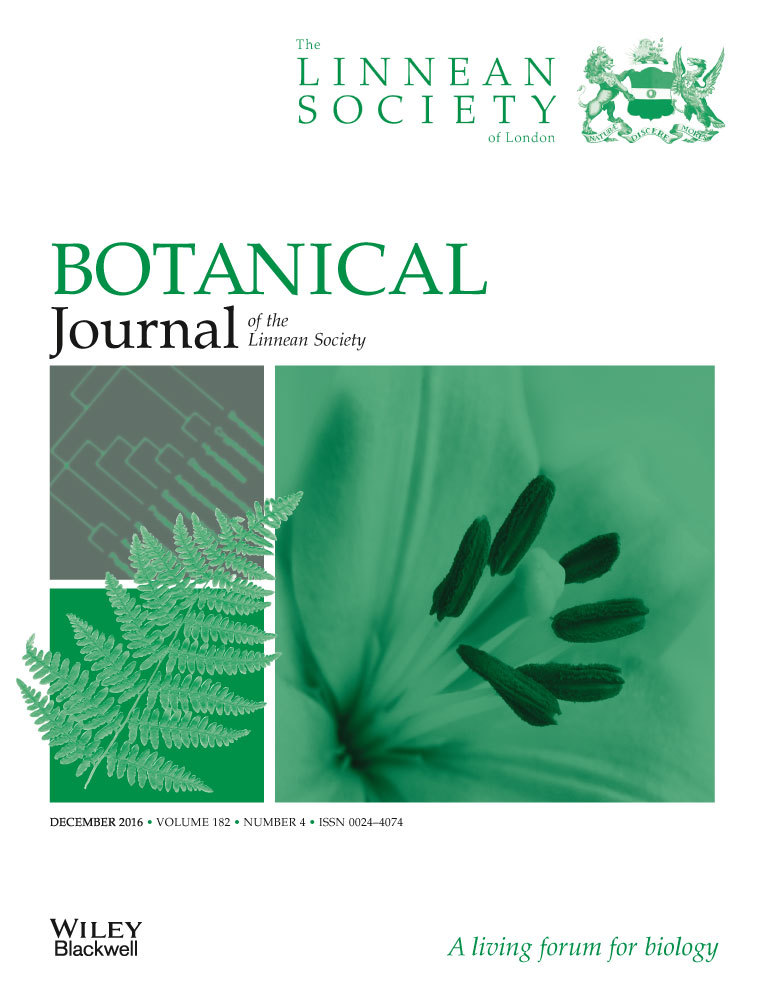Towards stable classifications
Classifications of plants and other organisms were historically compiled by one or a few people, who often disagreed with each other about which characters should be emphasized. Technological improvements in DNA sequencing in the 1990s allowed systematists to break away from this tradition and, for flowering plants, this led to the Angiosperm Phylogeny Group (APG) system, the fourth iteration of which was published earlier this year (APG IV, 2016).
In the two and a half centuries following the publication of Species Plantarum (Linnaeus, 1753), many botanists endeavoured to come up with more natural systems, using more characters, with the intention of recognizing groups that more closely reflected relationships. However, even readily diagnosable groups such as orchids or legumes were treated as one family in some classifications and as several families in others.
In the early 1990s, the first large analyses of angiosperms based on DNA sequences were published. These had become possible due to major developments in DNA sequencing technology and computing power in the late 20th century. Flowering plants were the first major group on which a large group of scientists collaborated in comprehensive analyses of this type, collecting sequences for the same genes, so that the data could be combined. A landmark paper with an analysis of 500 flowering plants and with > 40 co-authors was published by Chase et al. (1993), based on sequences of rbcL, revealing that, whereas the monocots were monophyletic, dicots were not. At lower levels, the phylogenetic trees also proved to be a mix of the expected and the unexpected, with, for example, Nelumbonaceae, Platanaceae and Proteaceae forming a clade, despite the lack of obvious shared characters.
Following the collection of data sets for several additional loci (revealing similar patterns of relationships), the first version of the APG classification was published (APG, 1998) in the Annals of the Missouri Botanical Garden, with three compilers and 26 contributors from five countries. Three further versions of the APG classification have since been published (APG II, 2003; APG III, 2009; APG IV, 2016), each with multiple compilers and contributors. The most recent version, APG IV, had ten compilers and 15 contributors from six countries, and followed an online survey (Christenhusz et al., 2015) and a workshop held at Kew.
With each version of the APG classification, the list of families and/or genera of uncertain position has become shorter, with only seven genera being listed in 2016. This is a result of the increase in our understanding of angiosperm relationships as more plants have been sampled and more DNA regions have been investigated. Changes in APG IV on the basis of published studies include placement of Petenaea Lundell in its own family (Petenaeaceae; Christenhusz et al., 2010) and recognition of Kewaceae for the genus Kewa Christenh. (previously included in Hypertelis E.Mey ex Fenzl in Molluginaceae; Christenhusz et al., 2014), but with each iteration, the classification is becoming more and more stable. Many botanic gardens and herbaria (including Kew) have adopted the APG system (e.g. Wearn et al., 2013); APG IV will not be the final version, but the decreasing number of changes means that reorganizing collections to reflect changes is becoming less arduous. The resulting system allows greater predictability than previous classifications, because the groups that are recognized reflect evolutionary relationships of the flowering plants.
Such developments are also taking place with other groups of organisms and Botanical Journal of the Linnean Society has published papers clarifying relationships among fungi and lichens (Divakar et al., 2016; Smith, 2016; Widhelm et al., 2016; this issue), algae (Maggs & Saunders, 2016), mosses (Bisang et al., 2014; Caparrós et al., 2016; Fedosov et al., 2016; Vigalondo et al., 2016) and ferns (Rumsey et al., 2014), in addition to angiosperms.
Fossil taxa present some particular challenges due to the lack of complete specimens and the inability to use molecular techniques, as illustrated by recent papers by Carpenter et al. (2014) and Smith (2016) and the comment on the latter by Auxier et al. (2016; this issue). However, fossils also provide opportunities for dating the origin of extant groups of organisms (e.g. Iles et al., 2015; Smith & Gandolfo, 2015).
For extant taxa, molecular analyses allow for studies of anatomical, chemical and cytogenetic characters, among others, in a phylogenetic framework, and these studies in turn provide additional information that helps in the placement of problematic taxa and informs inference of evolutionary pathways. Among angiosperms, taxa that have been studied in this way include Trithuria (Hydatellaceae; Sokoloff et al., 2014), Alismatales (Sokoloff, von Mering & Remizowa, 2015), Arecaceae (Balslev, Bernal & Fay, 2016; and references therein), Bromeliaceae (Crayn et al., 2015; Palma-Silva et al., 2016; and references therein), Poaceae (Arthan et al., 2016), Xyridaceae (Oriani & Scatena, 2014), Vitaceae (Ickert-Bond et al., 2015), Buxaceae (Oskolski et al., 2015), Icacinaceae (Byng et al., 2014), Ericales (Löfstrand, von Balthazar & Schönenberger, 2015; Schneider et al., 2015), Gelsemiaceae (Struwe et al., 2014), Apocynaceae (Surveswaran et al., 2014) and Solanaceae (Aubriot, Singh & Knapp, 2016a; Zamberlan et al., 2015).
In combination, phylogenetic and other studies are leading to the placement of previously enigmatic taxa including Cotylolabium Garay (Orchidaceae: Borba et al., 2014), generic recircumscriptions (e.g. Global Carex Group, 2015) and higher level reclassifications (e.g. Bone, Cribb & Buerki, 2015; Chase et al., 2015). Finally, in this issue, we present papers on fungi and lichens (Auxier et al., 2016; Widhelm et al., 2016), Alismatales (Platonova et al., 2016; Volkova et al., 2016), Amaryllidaceae (Souza et al., 2016), Ranunculaceae (Lehtonen, Christenhusz & Falck, 2016), Malvales (Aubriot, Singh & Knapp, 2016b; Aubriot et al., 2016b) and Malpighiales (Ghislain et al., 2016). These and other similar papers are leading towards ever more stable classifications.




